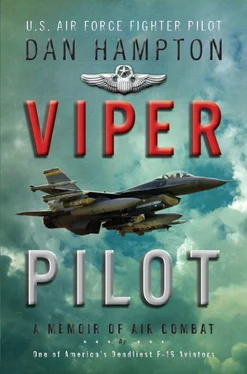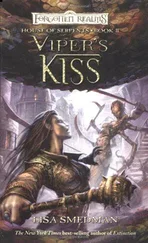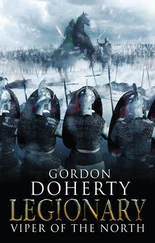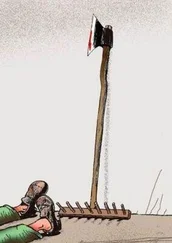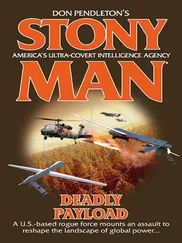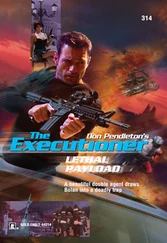With LBJ and McNamara gone, the air war over North Vietnam slid to a halt. Rolling Thunder was officially and conveniently ended in November just prior to the 1968 presidential elections. By 1970, the F-105 was no longer in production and still-mounting combat losses necessitated a revised Wild Weasel.
Enter the F-4 Phantom II.
Made by McDonnell Douglas, the Phantom began its military career as a Navy fighter attack jet in 1961. In 1962, a USAF version, the F-4C, was approved and made its first flight in May 1963. It was stubbier and heavier than the Thud but carried an improved fire control system. F-4Ds and Es followed, each with improvements that increased weapon accuracy, maneuverability, and range. Thirty six F-4Cs were re-designated as EF-4Cs and called the Wild Weasel IV. But it was a Band-Aid solution to the worsening situation in Vietnam and a SAM threat that continued to evolve.
In early 1971, the Vietnam lull began to come apart. Air activity over the north increased, and a new enemy offensive kicked off in March 1972. Operation Linebacker was unleashed against Hanoi to drive the enemy back and to win the war. By the middle of April, almost everything in North Vietnam was fair game, and President Nixon, acting on his promise to end the war, turned loose the U.S. Air Force.
The Weasels were once again thrown into the fray, sometimes flying four sorties a day, as rail yards, airfields, and storage facilities were attacked. Infrastructure that had kept the enemy functioning for the past seven years was finally on the target list and being hit hard. The success of this campaign led to the Paris Peace Talks, and on October 23, 1972, air operations above the 20th Parallel were temporarily halted. Linebacker II, the final push, began on December 18, with the Weasels paving the way for massive B-52 strikes that finally brought Hanoi to its knees. But, in true American political fashion, whatever is paid for in blood is usually given away by Washington, and in early 1973, the U.S. began a massive pullout of forces. By January 1975, the North Vietnamese army captured Phuoc Long Province, only eighty miles from Saigon, and on April 30, the Republic of South Vietnam ceased to exist.
So the Weasels came home. Some of them, anyway. Twenty-six Phantoms had been lost and forty-two more officers killed, missing, or captured. Two Weasels, Leo Thorsness and Merlyn Dethlefsen, had been awarded the Medal of Honor.
The advancement of the surface-to-air missile had ushered in a new and revolutionary form of warfare. It would eventually grow and morph into the Integrated Air Defense System, the deadliest technology to ever threaten aircraft. Countertactics had progressed, in turn, from Weasel I through Weasel IV. These techniques would continue to evolve, sometimes forgetting the fundamentals learned in Vietnam and sometimes remembering. Equipment and weapons were proposed, improved, or discarded, but one thing, as we shall see, didn’t change. Never again would American airpower attack in force without the Wild Weasel.
“IF THE TREES ARE GETTING BIG, PULL BACK TILL YOU SEE BLUE.”
Those were the immortal first bits of flying instruction I received from my dad. Followed shortly by “pull up now or we’re going to die.”
Dad was a businessman and a highly skilled engineer by the time I came along. He’d designed cockpit instruments for NASA spacecraft and helped save the Alaska pipeline by redesigning their flow meters. But he was also a retired Marine fighter/attack pilot. Flying was something I’d always been around as part of a colorful family. Ours is a lineage that includes several generals, one of whom was a Confederate cavalry officer. I also had a great-grandfather who managed to charge up San Juan Hill with Teddy Roosevelt, and another who shipped off to fight in France during World War I to escape a nagging wife.
Despite the family tree, Dad was never the Great Santini. He didn’t pressure me to join the military, and, in fact, I went to college to become an architect. No, flying was just something we did. It was fascinating to master a machine well enough to get it off the ground, yank and bank through aerobatics, then bring it back to safely land. Humans were never meant to fly, and most can’t learn, so I loved the special freedom of it—and still do. Fighter pilots usually are too busy to appreciate the miracle of flight, but it’s always there and I’ve been under its spell from the beginning.
Later I found it was a great way to entice young ladies into a date. Suppose you’re a girl and Bozo Number 1 asks you out to dinner and a movie. You’re tempted but along comes Bozo Number 2, who says, “Hey… how ’bout going flying with me before I take you to dinner?”
Yep. Guaranteed.
During my second year at college, something clicked inside, drawing me to become a professional pilot. I’d worked for architects the previous two summers, seen the business, and I enjoyed the creativity of designing structures. But I had a decision to make, because if I was going to seek an officer’s commission as a military aviator, it had to be started then, since the whole painful process took about eighteen months. So, it was wear a cloth tie and sit in an office for forty years—or cheat death and fly fast jets.
No contest, really.
BY THE SPRING OF 1986, I’D COMPLETED A FIVE-YEAR COLLEGE degree in four years so I could be commissioned on time and keep my “slot” for Undergraduate Pilot Training (UPT). This is Air Force basic flight school and is only open to commissioned officers who’ve been physically and mentally screened to absurd levels. In the late eighties, there were five air bases devoted to washing out future pilots, and I’d been given a choice: to wait nine months and head off to beautiful, sunny Williams Air Force Base in Arizona or go in five months to Vance Air Force Base, Oklahoma. With the eagerness and ignorance of youth, I chose Vance. You know that “nowhere” place everyone is always in the middle of? That would be Enid, Oklahoma. A small town right out of the movie Footloose . No kidding. They legalized dancing there in 1987.
UPT was generally composed of guys like me: newly minted second lieutenants fresh from a university, the Air Force Academy, or Officer’s Candidate School. We’d been selected by several different boards, who minutely examined the sum total of our lives up to that point. That included background checks, grade-point averages, sports, letters of recommendation, extracurricular nonsense, and probably how we parted our hair. There were physicals, eye exams, psych evaluations, interviews, and a comprehensive qualifying exam. This was just to get commissioned as an officer. The vast majority of the seventy thousand Air Force officers stop right there and enter one of the mission-support fields, like personnel, maintenance, or supply. There are additional batteries of tests designed to trip up prospective pilots, make you feel stupid, and, yes, specifically test your aptitude to enter the flying world. Only about ten thousand of the seventy thousand officers eventually become pilots, and less than three thousand have what it takes to become active fighter pilots.
So, assuming you pass all that with high enough scores, you get past the gate and up to bat. For your efforts, you’re guaranteed nothing except a shot at the silver wings of an Air Force pilot. Everything that comes later is up to you. Contrary to popular belief, it doesn’t matter where you came from, who your daddy knows, or what university graduated you. Air Force pilot training is an equal-opportunity destroyer of hopes and dreams. I saw all types wash out. Academy guys, 4.0 GPA engineering types, and men who arrived with a thousand civilian flying hours who couldn’t fly formation or land a jet.
Читать дальше
